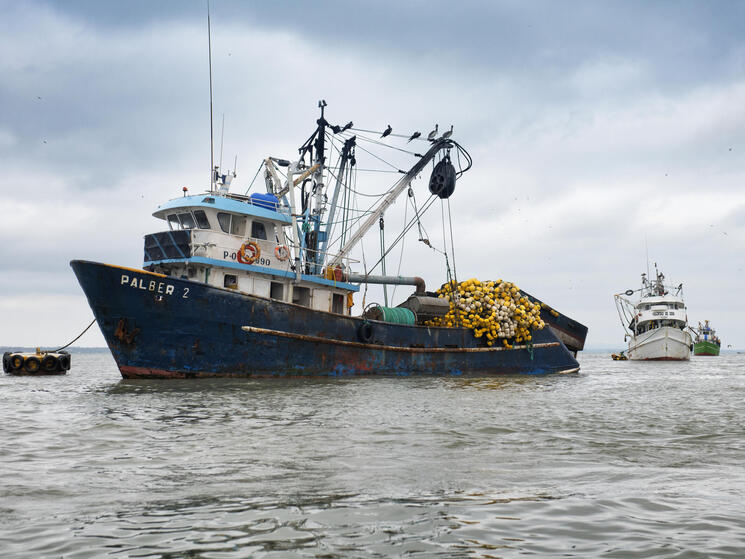
Data is a Key Element to Transparency in Seafood Supply Chains
- Date: 19 February 2020
- Author: David Schorr, Senior Manager, Transparent Seas, WWF
Changing any complex system requires finding a point of maximum leverage. When it comes to creating transparency in the seafood trade, access to reliable information is the key, and there are two points of leverage to make it happen: getting companies around the world to agree on what data is needed, and ensuring they can share it seamlessly .
Affordable and reliable traceability—the concept of tracking seafood from bait to plate—depends on fishers and aquaculture farmers routinely providing verifiable data. One way to achieve that vision is for governments to require this information as a routine part of access to markets. But currently there is no global agreement on what information must accompany seafood products. In fact, a new study from a consortium of NGOs analyzed the key data elements required in the top three seafood markets—US, EU and Japan—which are responsible for nearly two thirds of all seafood imports. It found that even governments with the most robust import regulations don’t fully capture all of the data needed to ensure that the fish bought by consumers is coming from legal sources.
That’s where the considerable leverage of market leaders in industry comes in. WWF has been working with seafood companies around the world to develop urgently needed standards for capturing and sharing a consistent set of basic information based on shared industry-wide expectations.
Seafood is one of the most globalized of all food commodities, with supply chains that crisscross oceans and continents. While this global web of production allows coastal communities to sell their seafood products into important international markets--and gives consumers access to seafood from every corner of the planet--there are risks and new responsibilities for businesses. Traceability systems can mitigate these risks and provide benefits to public health, social welfare, and environmental sustainability. But only if those systems can communicate seamlessly via globally established standards. Businesses have a stake in enabling that to happen.
The first step is for companies to agree on what information needs to be shared. Key Data Elements, known as KDEs, are imperative for establishing reporting requirements at critical stages of production and trade. These can work hand-in-hand with government reporting requirements and trade controls, as well as with systems for data collection needed for sustainable resource management. Having the right KDEs is also what generates value in the form of consumer and brand confidence.
In fact, getting industry-wide agreement on KDEs is one key part of a new set of industry-led standards that are about to start reshaping the way businesses do seafood traceability. As highlighted in an open letter recently released by a group of seafood industry leaders, these groundbreaking standards include a ‘basic universal list’ of standardized seafood KDE’s that will set a global baseline for the information that should accompany all seafood products. These new standards, about to be released at a major seafood industry trade show in Boston this March, have been developed by industry through the Global Dialogue on Seafood Traceability, or GDST for short. The GDST 1.0 standards are the data-sharing foundation on which reliable, affordable, and efficient seafood traceability will be built.
Not only does GDST 1.0 provide a universal check-list of the information that must accompany seafood products, it sets out technical specifications for how systems share that information seamlessly. These technical standards are already being road tested by leading seafood supply chain companies, including some of the world’s biggest seafood processors, brand owners, and retailers. For the companies involved, it’s not just a matter of meeting CSR goals – these system design standards are helping address core business functions, and ensuring better return on investment when companies upgrade their traceability systems.
The ocean provides a bounty of seafood, supporting hundreds of millions of jobs and feeding billions of people. Creating seafood supply chain transparency creates accountability and provides the data needed for improved science-based management of fisheries and aquaculture farms. This mix of sustainability and business strategy is a powerful lever for driving change in the complex world of seafood trade and when GDST 1.0 launches this March during the North American Seafood Expo, industry will be one step closer to sustaining the future of the seafood industry.